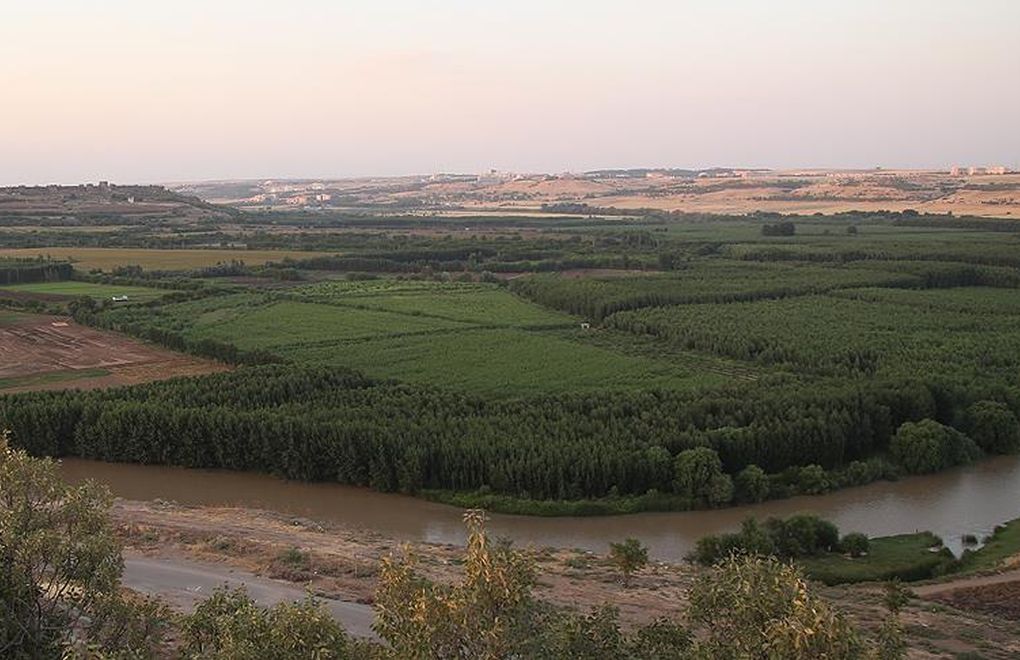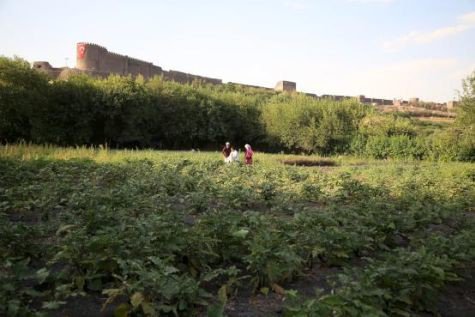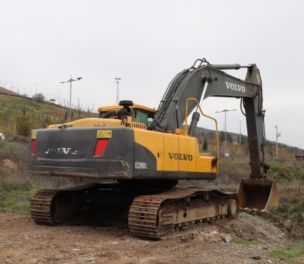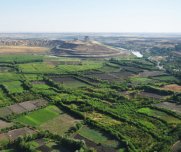* Photos: Anadolu Agency (AA)
Click to read the article in Turkish
The Ecology Union (Ekoloji Birliği) has released a written statement about Hevsel Gardens in Turkey's southeastern province of Diyarbakır.
The Union has warned that Hevsel Gardens, which are listed among the UNESCO World Heritage Sites together with Diyarbakır Fortress, face a threat of devastation and ecological destruction due to the construction works foreseen for a nation's garden project in the region.
CLICK - 'Nation's Garden in Diyarbakır Demolishes History'
'1,095 square meter green space destroyed'
"With an 8,000 years of history, Hevsel Gardens are, in a sense, a source of oxygen for the city. They have an aquatic ecosystem and are home to 51 fish species, 28 of which are endemic. They also have a forest ecosystem with highly diverse tree species," the Union has noted and said:
"However, in these days, they are again faced with devastation and ecological destruction. The slaughter began with almost 7,000 trees cut by the Presidency of Dicle University. As the people of Diyarbakır, nature defenders, professional organizations and NGOs stood watch in protest, they took a step back and the slaughter of trees was stopped.
"The Historical City Walls of Diyarbakır and Hevsel Gardens were listed among 'World Heritage Sites' by the UNESCO in 2015.
"In spite of this, they were declared a 'Special Project Zone' by the Ministry in 2016 and, in addition to this, constructions such as a nation's garden, cafe, observation terrace, asphalt and concrete roads have started to be built without informing the public about the content of the project in any way. A green space of 1,095 square meters has been destroyed only for the cafe.
'UNESCO is silent'
"The destruction of nature is underway all around the country and Hevsel Gardens are also getting their share from this. Since the gardens were declared a 'Special Project Zone,' excavated soil and rubbles have started to be dumped there as a result of the construction works, reed fields have started to disappear and pollution has increased in the region.
"Using people's staying home and UNESCO's silence as an opportunity, authorities and capital owners have been destroying Hevsel Gardens.
"The UNESCO, again, stayed silent when the 12,000-year Hasankeyf was flooded and it was abandoned to its fate. As part of Ilısu Dam Project, which started years ago, the villages of ancient Hasankeyf have been engulfed, agricultural fields have been destroyed, the region has been depopulated, the history, nature and ecosystem of the region have been destroyed.
"It is unacceptable that the UNESCO and other international organizations and institutions are mere spectators to the destruction of all civilizations' common heritage and cannot take any preventive attitude.
"We have also learned that the dam was inaugurated on May 19, 2020 under COVID-19 conditions. On the same day, the State Hydraulic Works (DSİ) made a statement and announced that the dam project was completed and the tribunes would start to operate."
'Stop this plunder immediately'
The Union has called on the authorities and responsible parties to "stop this plunder" immediately and the UNESCO to "break its silence and take a preventive attitude" in the face of this destruction: "Let us stand up against the attacks targeting nature in all parts of our country from Hevsel Gardens to Hasankeyf, protect our nature and hand it down to our children."
About Hevsel Gardens
Wikipedia shares the following information about Hevsel Gardens in brief: "The Hevsel Gardens are the seven hundred hectares of cultivated, fertile lands near the Tigris in eastern Turkey, between the Diyarbakır Fortress and the river. The fortified city was enclosed by a two-part system of defensive walls, and the gardens, fed by springs on the steep slope below, played a vital role in keeping the city provisioned and watered. The gardens were added to the UNESCO tentative list in 2013, and they became a World Heritage Site in 2015, along with the walls of Diyarbakır Fortress. "Nowadays, about one third of the gardens is used for growing poplars and the rest for cultivation of cabbage, spinach, lettuce, radish, green onions, parsley, watercress, eggplants, squashes, tomatoes, peppers and beans, peaches, apricots, plums, cherries, figs, mulberries and nuts." UNESCO also shares the following brief information about Diyarbakır Fortress and Hevsel Gardens: "The Diyarbakır Fortress and Hevsel Gardens Cultural Landscape is located on an escarpment in the Upper Tigris River Basin. The fortified city with its associated landscape has been an important centre and regional capital during the Hellenistic, Roman, Sassanid and Byzantine periods, through the Islamic and Ottoman periods to the present. "The property includes the impressive Diyarbakır City Walls of 5800 metres – with its many towers, gates, buttresses and 63 inscriptions from different historical periods; and the fertile Hevsel Gardens that link the city with the Tigris River and supplied the city with food and water. "The City Walls, and the evidence of their damage, repair and reinforcement since the Roman period, present a powerful physical and visual testimony of the many periods of the region's history. The attributes of this property include the İçkale (Inner Castle), Diyarbakır City Walls (known as the Dişkale or Outer Castle), including its towers, gates and inscriptions, the Hevsel Gardens, the Tigris River and Valley, and the Ten-Eyed Bridge." |
(EMK/SD)








